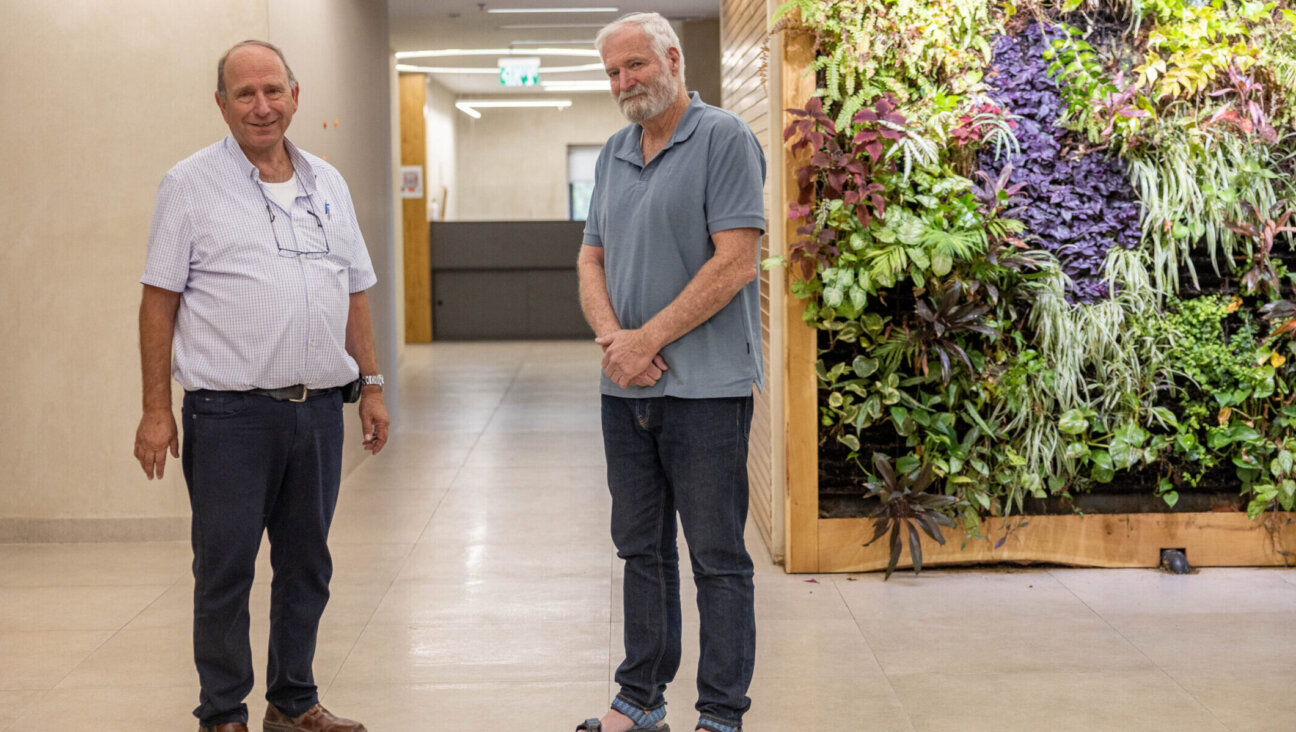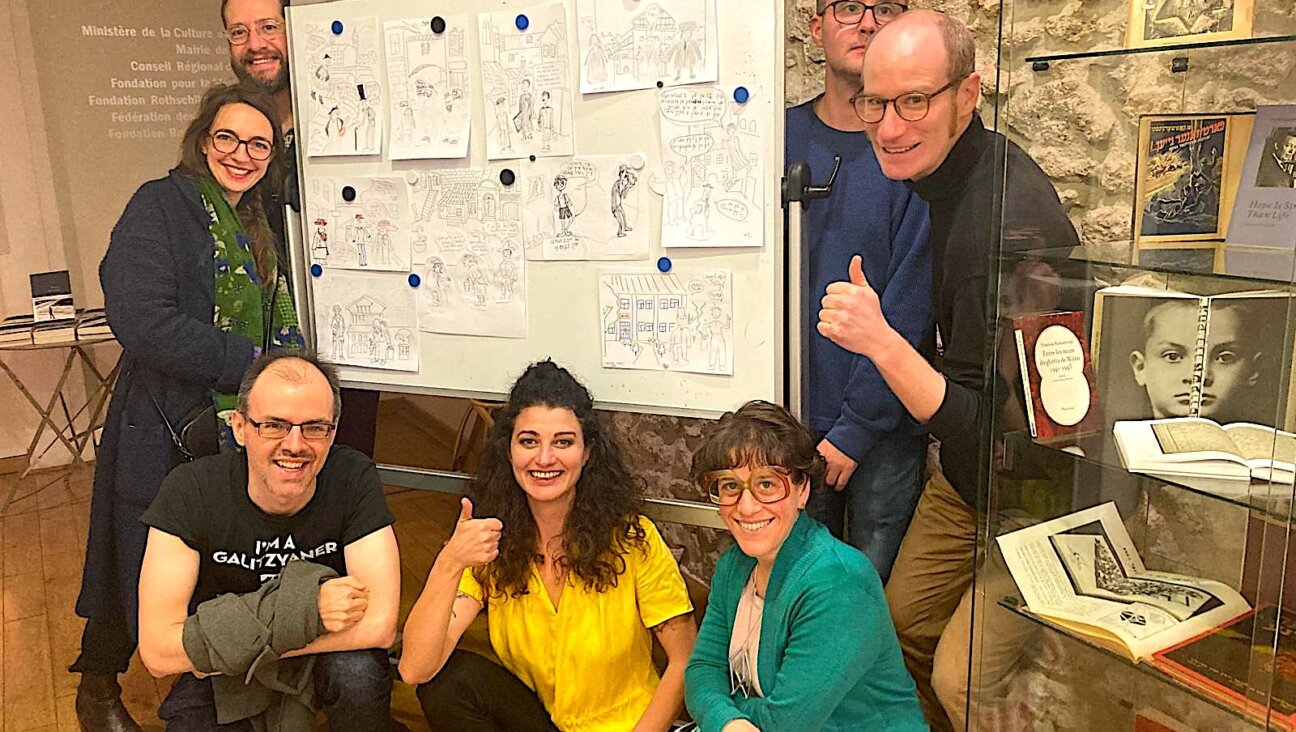Poverty Figures Lift Veil, a Bit, On Ills of Needy
The National Jewish Population Survey, the trouble-plagued study released last month by United Jewish Communities, is winning half a cheer from social service experts and anti-poverty advocates for its disclosure of a 5% estimated poverty rate among American Jews.
The statistic appears to represent the first effort in at least a quarter-century to determine the extent of economic need among Jews nationwide.
But many observers warn that the figure is inaccurate. The actual extent of economic need among American Jews is considerably greater, most experts say.
Local Jewish population studies in cities such as Philadelphia, Miami and San Francisco have found poverty among Jews running closer to the rate among the general American population, which has ranged between 11% and 12% in recent years.
Moreover, most local Jewish studies, as well as the national survey, were conducted before the current economic downturn, which has exacerbated economic hardship across the country and across the economic spectrum.
“People are grappling with poverty in ways they never expected,” said Lisa Brooks, a development officer at the Jewish Family Service of Los Angeles. “We are definitely seeing increasing numbers of families and individuals at our food banks.”
The reason for the apparent undercounting of the poor in the national survey is twofold. First, the survey posed its questions on income and poverty only to a selected subgroup of “more Jewishly engaged” respondents. Less affluent Jews are less likely to participate in Jewish religious and communal activity, according to the survey’s own findings, and so were less likely to receive the full survey questionnaire, almost certainly skewing the survey’s income findings upward.
Equally important, many social service experts say the federal poverty rate, which was used by the survey as its benchmark of poverty, is outdated because of rising housing costs and other changes. The official poverty rate ranges from just under $9,000 per year for a single person to $24,000 for a family of four.
The federal benchmark may be particularly misleading as a measure of Jewish poverty, moreover, because it fails to reflect the higher costs of living in urban areas, where most Jews live.
Many Jewish social service experts prefer to use a cutoff of $25,000 in annual household income as a measure of need, a category often referred to as “low-income” or “near-poor.”
“These near-poor are in many cases worse off than the poor because they don’t get Medicaid, they don’t get Section Eight [federal housing aid] and they don’t have insurance,” said William Rapfogel, executive director of the Metropolitan Council on Jewish Poverty in New York City.
An early version of the survey, released in October 2002, reported that 19% of Jews live in households earning less than $25,000 per year. Among Americans overall, the survey said, some 29% live in low-income households.
In many local communities, however, the levels of need are considerably higher. A local Jewish population survey conducted in Philadelphia in 1997 found 24% of households living on less than $25,000 per year. A survey conducted in Miami in 1994 found 27% of local Jewish households below that income level.
The Philadelphia survey found 7.5% of local Jews living below the official federal poverty line. The Miami survey found 11.3% below the federal line.
A survey conducted in San Francisco in 1988 found 15% of Jews in the Bay area living at or near the poverty line.
Inquiries by the Forward suggested that in much of the country, recent information on Jewish income and poverty is unavailable.
According to Ira Sheskin, a University of Miami geographer who has conducted community surveys for 31 local Jewish federations around the country, “no one” was interested in poverty levels until just a few years ago.
“The first person to ask me to systematically collect poverty levels was in 1999, in Palm Beach, Fla. It’s not that they did not want to know about it before — people just didn’t think about it for the most part.”
Indeed, New York’s Metropolitan Council is the only local Jewish federation agency in the country devoted exclusively to Jewish poverty.
“I don’t see very many other communities focused on the problem,” Rapfogel said. “There is a myth that Jewish poverty only exists in New York.”
Poverty does seem higher among Jews in New York than elsewhere. A survey conducted last year by UJA-Federation of New York found that 21% of the city’s Jewish population lived below 150% of the federal poverty line, which is considerably below $25,000 per year for most households.
However, community officials from the rest of the country warn that Jewish poverty is simply more obvious in New York than elsewhere because of the city’s neighborhood patterns.
“Jewish poverty is visible in New York,” said Anita Friedman, executive director of the Jewish Family and Children’s Services of the San Francisco Bay area. “Out here you can live your whole life without seeing Jewish poverty. There’s no neighborhood, and so it’s just not as visible.”
Partly in consequence, Friedman argued, Jewish communities outside New York pay less attention to Jewish poverty than to issues of Jewish identity and affiliation.
“The Jewish community is very preoccupied with its death,” Friedman said. “This is important, but if we do it at the expense of the poor and vulnerable among us, it leaves our Jewish promises empty.”
Some studies have suggested that inattention to the needs of the Jewish poor may be due in part to the nature of Jewish communal leadership, which is drawn largely from the ranks of affluent donors who may be unaware of the less affluent.
A 2002 study published by the American Jewish Committee, “The Costs of Jewish Living,” cited evidence that two-thirds of the members of governing boards of Jewish organizations have incomes higher than $150,000 per year, leading to pricing and priorities that fail to address the needs and abilities of the poor. As a result, “Jewish life costs too much for all but the highly motivated,” wrote the study’s author, Gerald Bubis, a former dean of the school of Jewish communal service at Hebrew Union College–Jewish Institute of Religion in Los Angeles.
Lower Jewish participation by the poor is confirmed in the new national survey. The study reported that Jews living below the poverty line are much less likely to join a synagogue than Jews above the poverty line (32% versus 47%), and also less likely to belong to a Jewish community center, take part in adult Jewish education or belong to any Jewish organization. They were, however, more likely to light Sabbath candles and to keep kosher.
According to the national survey, 22% of Jewish immigrants who have arrived since 1980 live below the poverty line, as well as 9% of the elderly and 8% of Jewish single mothers.
The relative lack of information about Jewish poverty contrasts sharply with earlier generations, when communal institutions both locally and nationally followed the issue closely. Among the last major efforts to attract public attention to the issue was an essay published by the AJCommittee in 1971, “The Invisible Jewish Poor,” by Anne Wolfe, and a 1980 book by Thomas Cottle, “Hidden Survivors: Portraits of Poor Jews in America.”
The next major national study of the issue was the new National Jewish Population Survey.
The recent revival of interest at the local community level is said by communal officials to be boosting organized efforts to assist the poor.
The Baltimore Jewish federation first attempted to measure local Jewish poverty three years ago, using benchmarks that officials acknowledged were not precise but “subjective.” “Our study suggested that 25% of Baltimore Jews have a hard time making ends meet,” said Matt Freedman, the federation’s vice president for community planning and allocations.
The study helped awaken the community to the problem, Freedman said.
“We hadn’t perceived the situation to be as large as it is,” he said. “Because the community is so successfully philanthropically and so well known for our educational programs, we didn’t perceive ourselves to be a community with so many needy people. Now, though, increasing resources are going to the problem.”
A message from our CEO & publisher Rachel Fishman Feddersen

I hope you appreciated this article. Before you go, I’d like to ask you to please support the Forward’s award-winning, nonprofit journalism during this critical time.
We’ve set a goal to raise $260,000 by December 31. That’s an ambitious goal, but one that will give us the resources we need to invest in the high quality news, opinion, analysis and cultural coverage that isn’t available anywhere else.
If you feel inspired to make an impact, now is the time to give something back. Join us as a member at your most generous level.
— Rachel Fishman Feddersen, Publisher and CEO






















